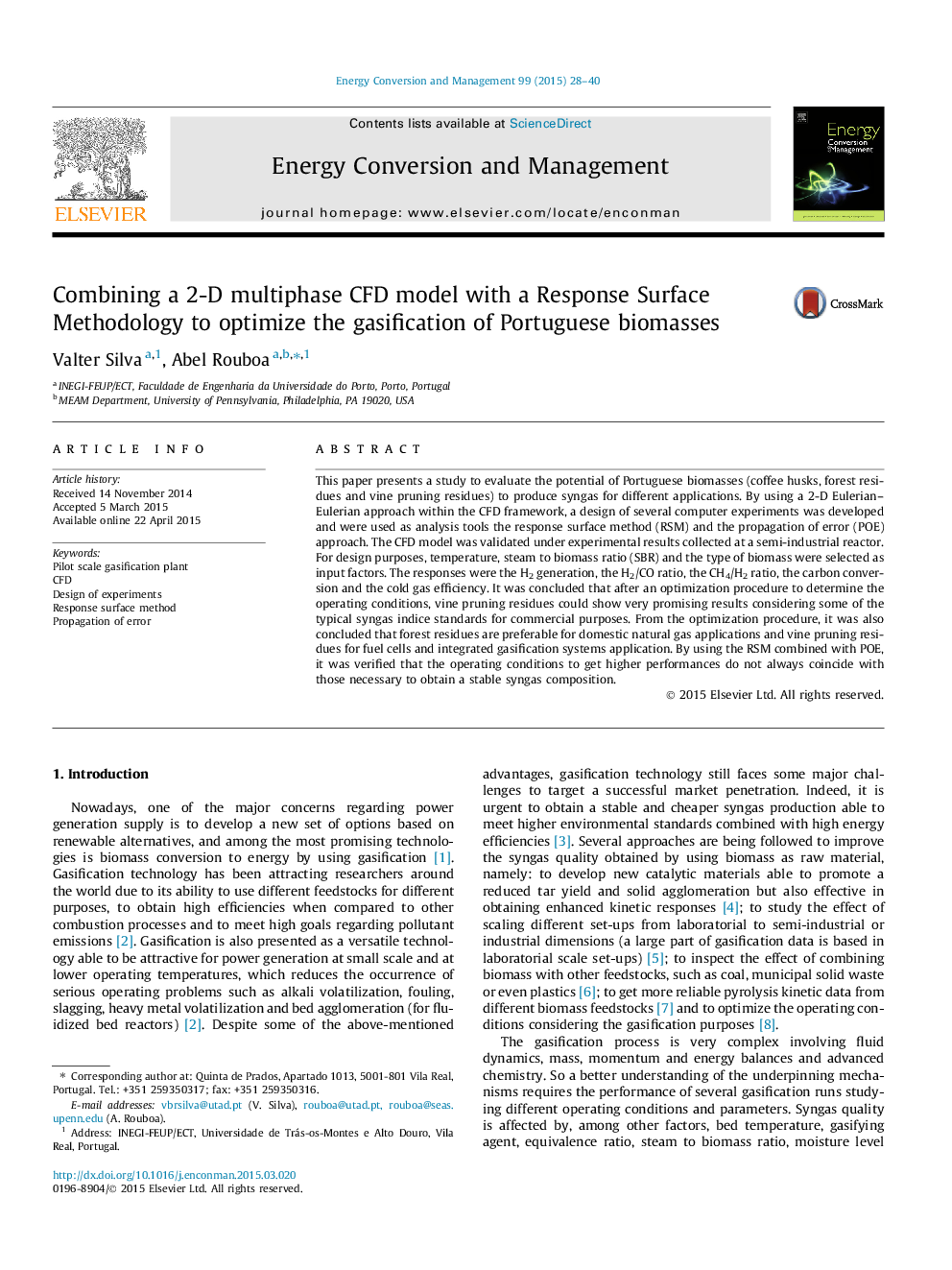| Article ID | Journal | Published Year | Pages | File Type |
|---|---|---|---|---|
| 760519 | Energy Conversion and Management | 2015 | 13 Pages |
•A multiphase CFD model was combined with RSM.•Gasification optimal operating conditions were found in a pilot scale reactor.•Syngas quality indices were optimized in a biomass gasification process.•Propagation of error methodology was combined with a CFD model and RSM.
This paper presents a study to evaluate the potential of Portuguese biomasses (coffee husks, forest residues and vine pruning residues) to produce syngas for different applications. By using a 2-D Eulerian–Eulerian approach within the CFD framework, a design of several computer experiments was developed and were used as analysis tools the response surface method (RSM) and the propagation of error (POE) approach. The CFD model was validated under experimental results collected at a semi-industrial reactor. For design purposes, temperature, steam to biomass ratio (SBR) and the type of biomass were selected as input factors. The responses were the H2 generation, the H2/CO ratio, the CH4/H2 ratio, the carbon conversion and the cold gas efficiency. It was concluded that after an optimization procedure to determine the operating conditions, vine pruning residues could show very promising results considering some of the typical syngas indice standards for commercial purposes. From the optimization procedure, it was also concluded that forest residues are preferable for domestic natural gas applications and vine pruning residues for fuel cells and integrated gasification systems application. By using the RSM combined with POE, it was verified that the operating conditions to get higher performances do not always coincide with those necessary to obtain a stable syngas composition.
